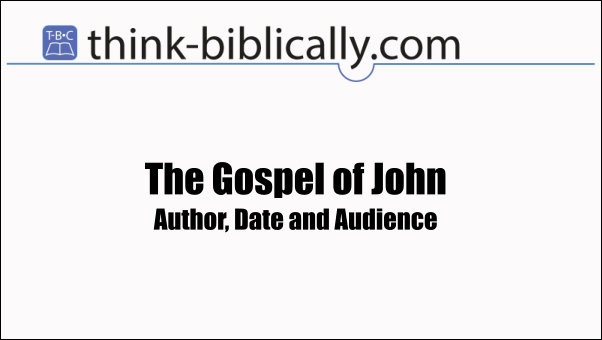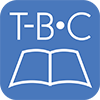By Tyson Thorne

It's nearly summer, and readers of this site know that means its time for a series on a book of the Bible. This summer we'll be working our way through the Gospel of John, of which our previous post "A Geek Like Me" may be considered as an introduction. In all my years of teaching the Bible I've never taught through this book, so I am approaching it with careful observation. As always, I appreciate reader feedback through our Facebook Group. Please let me know if you disagree with my conclusions or reasoning or have any knowledge that should be added.
Author and Setting
The book claims to have been written by “the disciple whom Jesus loved” (13.23, 19.26, 20.2, 21.7, 21.20, 21.24, long believed to be John. Some have criticized the assumed and traditional authorship since nowhere does John claim to have written the gospel (John wrote First, Second and Third John as well as the book of Revelation). Others have argued that John doesn’t name himself either as the author of the book or even as a disciple due to his own modesty and humility. After all, the other gospels clearly reveal John’s role among the 12, and from what we know about John’s character he wouldn’t want to place attention on himself, but instead on Jesus.
There are three ideas postulated for the date of writing, early (around 60 AD), traditional (between 85 and 100 AD) and late (second century).
The late date of authorship which also supposes a non-Johannine authorship, is the possibility most readily eliminated. Details contained in the book indicate that it was written by an eye witness. Only someone with first-hand knowledge would know the exact number of fish caught in 21.11, or that the house in Bethany was filled with perfume fragrance from a broken jar (12.3). Someone writing later who wasn’t with Jesus during these events would hardly be able to recount the events with such precision. It is argued that the theology of John is well-developed, which is the primary reason some conclude the book was written in the second century. While that is true, John was a remarkable fellow who spent time with the more remarkable Jesus. Even more compelling, is the Egyptian papyrus fragment1 of John 18 dated about 135 AD; Allowing for an appropriate time-frame of distribution from Ephesus (where the gospel was first penned) to Egypt necessitates the Gospel to have been written prior to 100 AD.
Those who argue for an early date of writing do so based on two primary evidences. The first is that the book does not mention the destruction of the Temple in 70 AD. Such a significant event, especially one Jesus prophesied about, surely would be mentioned. Secondly, John uses the present tense instead of the past tense when writing about certain events. For example, John makes reference in 5.2 to a pool that “is near the sheep gate” rather than “was near the sheep gate”. That pool was destroyed along with the Temple in 70 AD. While the book doesn’t mention the destruction of the Temple, it is reporting about events prior to its destruction. This argument may be compelling for the other Gospels which tell the entire story of Jesus’ life, John carefully arranges events from only 20 days of Jesus’ life and does not include anything outside of that time frame. Furthermore, John’s uses of the present tense when speaking of past events is hardly evidence of an early date of writing but only a style of writing.
The early date is certainly possible, and between the early and middle dates there isn’t any important theological truths that are in jeopardy (unlike the late date which claims John is not the author). Centuries of tradition, however, place the date of writing circa AD 85.This date fits with the distribution of the gospel mentioned earlier and is the more likely date, but in the end it makes little difference if the Gospel were written in 60 or 5 AD.
Finally, in regard to John’s intended audience, due to his statement that his intention was to convince his readers that “Jesus is the Messiah” (20.31), it is a safe bet that his original audience was Jewish.
The Big Idea:
Rather than opening with yet another birth narrative, John narrowly focuses on a few days and key events.. John presents in his account a Messiah who knows where He came from and where He was going (8.14). John wrote his account to show that Jesus is God come in the flesh, so that the readers may “come to believe that Jesus is the Messiah” (20.31). John portrays Christ’s participation in the Creation account, and Christ as God’s most profound Word communicating all God desires to say to mankind.
